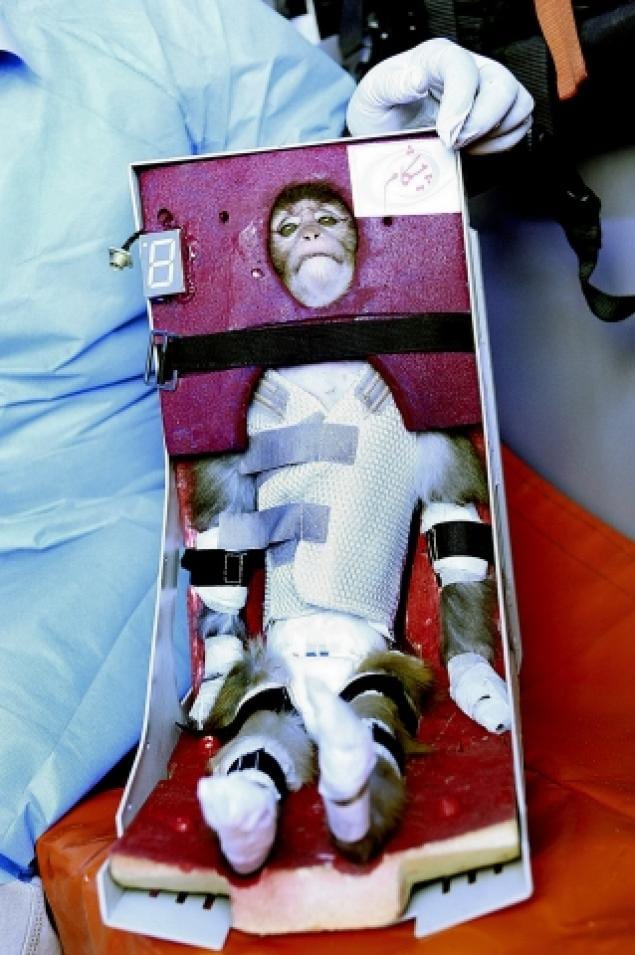
On January 28th, the Iranian space program announced that it had successfully launched a monkey 120 kilometers into space. Source: NY Daily News
On January 28th, the Iranian space program announced that it had successfully launched a monkey 120 kilometers into space. The creature, which was secured in a contraption that restricted all movement, was transported into space aboard the fighter jet Pishgam, which means “pioneer” in Farsi. .
Completely sealed in a capsule, the monkey was carefully monitored throughout the course of its journey. The capsule, which absorbed carbon dioxide and released oxygen, allowed the monkey to continue breathing during spaceflight.
Videos aired on state television served as proof that the monkey had survived the journey. Iranian officials released optimistic statements regarding the future of the Iranian space program. Some officials went so far as to mention the possibility of sending humans into space in the future (1).
The Iranian space program is not the first to have launched a monkey into space, and it seems to be following the model laid out in the early stages of the space programs of both the United States and the former Soviet Union. For example, the United States successfully launched a rhesus monkey into space as early as 1948 (1).
However, not everyone is optimistic about the recent developments in the Iranian space program, and some remain skeptical about Iran’s intentions. Victoria Nulland, a U.S. official, noted that Iran’s space program is directly relevant to the development of long-range ballistic missiles. The recent advances of the Iranian space program, if applied to missile delivery, would violate U.N. Security Council resolutions against the development of such technologies (1).
The validity of the claims of the Iranian space program has also been questioned. Many have noted that the monkey looks significantly different in before and after photographs of the spaceflight (2, 3).
In the preflight photographs, the monkey had a very distinctive red birthmark over its eye that is not present on the monkey in more recent photographs. Some international commentators are convinced that the original monkey did not survive its journey or that the space flight did not occur at all (2).
To confound the issue, the Iranian state news has refused to release any footage of the jet returning from space. The takeoff, however, was well documented and has been widely circulated on news networks in both Iran and the rest of the world (3).
Regardless of the success of this particular flight, it remains clear that the Iranian space program has been growing steadily over the past decade. It launched its first satellite in 2005, its first suborbital rocket in 2008, and its first suborbital rocket containing animals (one rodent, two turtles and several worms) in 2010 (4).
Iranian President Ahmadinejad has announced that he hopes to facilitate the spaceflight of an Iranian astronaut by 2017 (4). Several countries, including the United States, remain wary of ulterior motives from the Iranians (3).
References:
- G. Botelho, Reports: Monkey soars from Iran into space — and back (2013). Available at http://www.cnn.com/2013/01/29/world/meast/iran-monkey-launch/ (1 February 2013)
- P. Greenwood, Is Iran’s space monkey a fake? (2013). Available at http://www.telegraph.co.uk/news/worldnews/middleeast/iran/9842580/Is-Irans-space-monkey-a-fake.html (1 February 2013)
- O. Yaniv, Was Iran’s space monkey launch a scam? (2013). Available at http://www.nydailynews.com/news/world/iranian-space-monkey-flight-fake-article-1.1253425 (1 February 2013)
- Iran in Space (2012). Available at http://www.aerospaceguide.net/worldspace/iranianspaceprogram.html (1 February 2013)